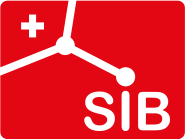For the last few years, research in DNA and RNA has been dominated by short-read sequencing. Although this has revolutionized the way we answer biological questions, it has its limitations. One important limitation is read length. The invention of high-throughput long-read sequencing has enabled us to solve questions on genome assembly, haplotyping, structural variation and alternative splicing. In this course, the participant will get acquainted with the major long-read sequencing technologies (PacBio SMRT and Oxford Nanopore Technology), and get experience with hands-on work involving long-read data.
This course is addressed to people that are working with or will be working with long-read data.
At the end of the course, the participants are expected to:
- Understand the basics behind PacBio SMRT sequencing and Oxford Nanopore Technology sequencing
- Use the command line to perform quality control and read alignment of long-read sequencing data
- Be able to do differential isoform expression analysis or a repeat expansion analysis based on long-read sequencing data
